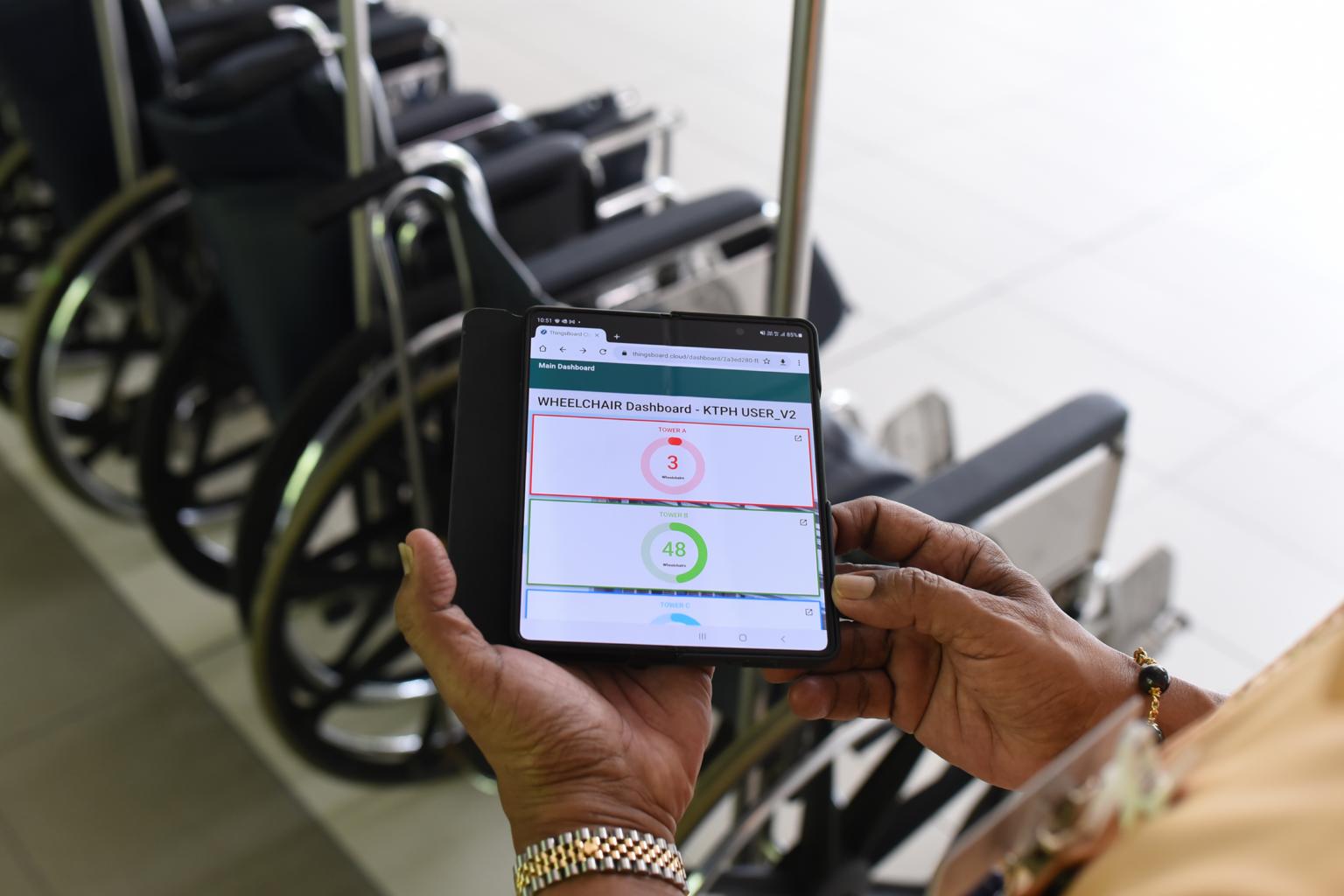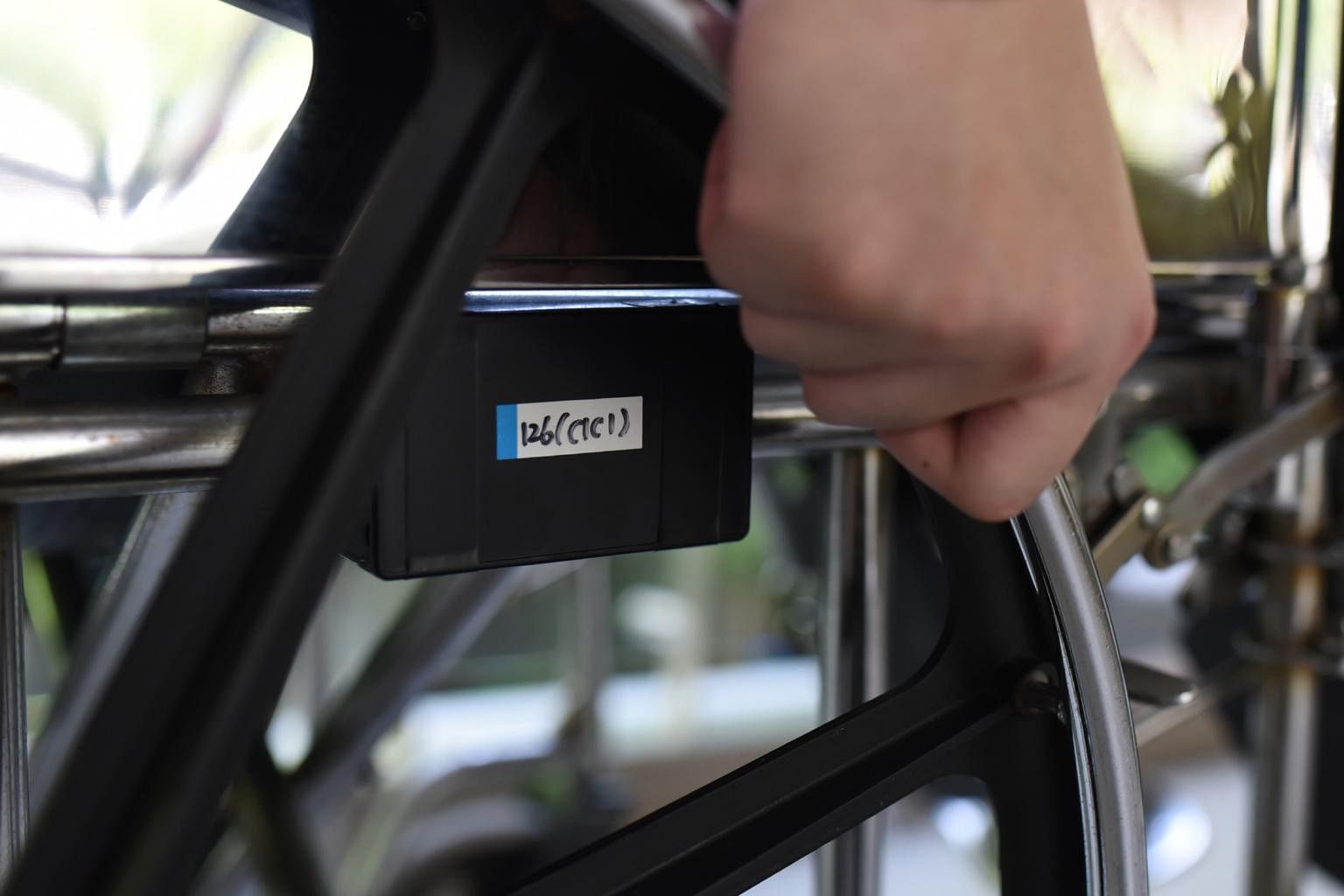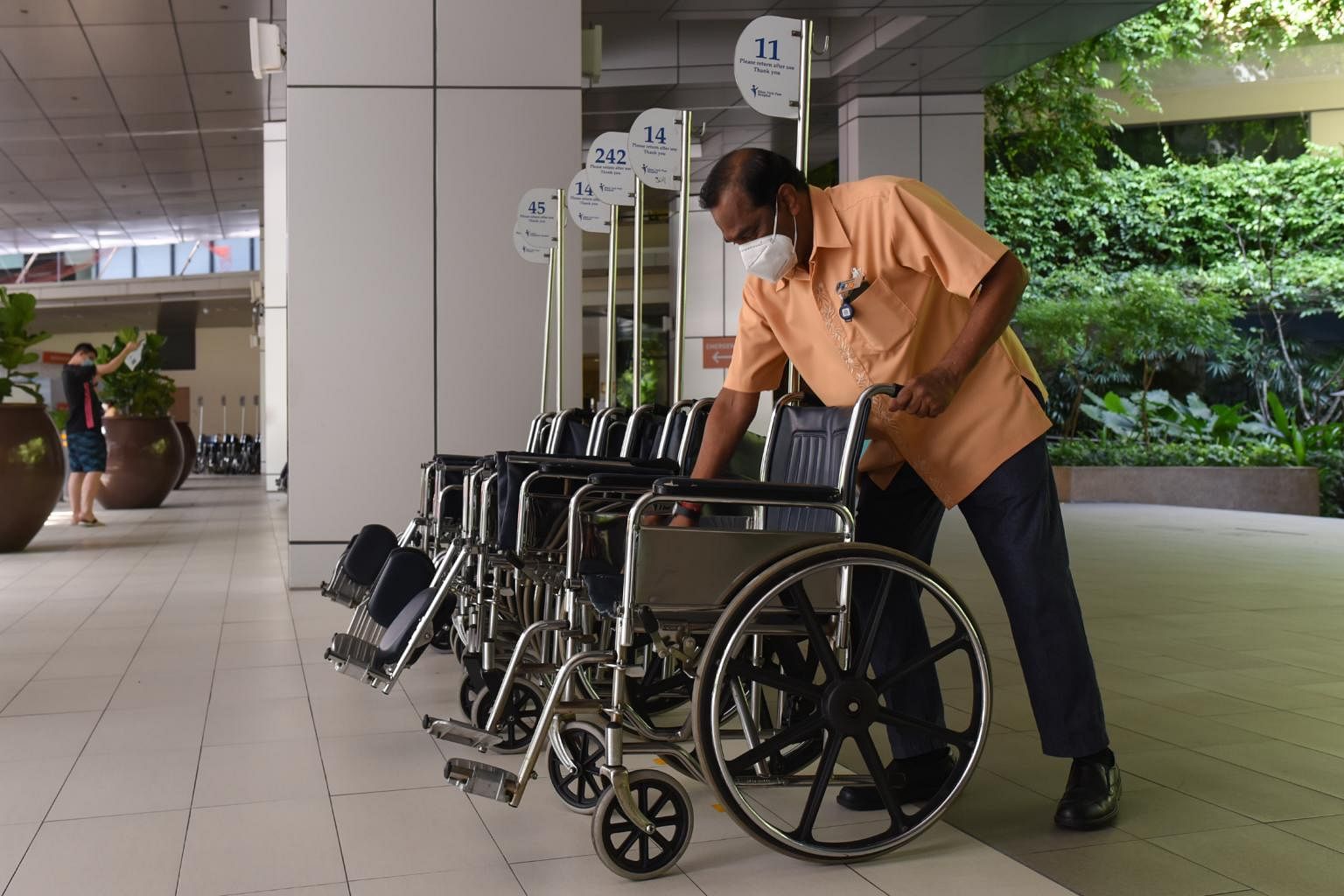Hospitals deploy Internet of Things systems to track wheelchairs, patient location
Sign up now: Get ST's newsletters delivered to your inbox

A web app dashboard showing number of wheelchairs at various locations.
PHOTO: KHOO TECK PUAT HOSPITAL
Follow topic:
SINGAPORE - For the past 12 years, Mr Sockalingam Ramalingam would comb the campus of Khoo Teck Puat Hospital (KTPH) on foot two to three times a day, with each trip taking up to half an hour.
The 63-year-old senior patient greeter would check basement carparks, specialist clinics, wards and other common areas across the hospital's three tower blocks, each with six storeys, to retrieve unused wheelchairs and bring them back to the hospital's main lobby and other areas where patients might need them.
Now, instead of relying on his instincts and guessing which area might have an excess of wheelchairs, Mr Sockalingam can consult a dashboard on his mobile phone which tells him exactly where to look, cutting the time needed for this critical task in half.
In April last year, KTPH began a pilot scheme to tag 150 wheelchairs with long-range radio frequency beacons which help staff locate and retrieve them more easily. Today, 300 of the hospital's 371 wheelchairs have been tagged under the smart tracking system.
The system uses a network of routers placed at known locations throughout the hospital to report the number of wheelchairs in various areas, including how many are in a specific room or on a certain floor.
A beacon can be detected when the wheelchair is within 30m of the nearest router.
A Web app which can be accessed on mobile devices notifies hospital staff when designated areas are running short and where to find excess wheelchairs.
Staff can thus ensure a supply of available wheelchairs for patients who need them.
Mr Sockalingam said the new system has saved him effort and time, which he can now spend with patients. It has also relieved a significant source of stress for his team of 10 patient greeters, especially during the hospital's peak hours on weekdays.
"As a front-line worker interacting with patients, I cannot simply tell them, sorry, there are not enough wheelchairs. I have to face the problem," Mr Sockalingam said of his role.
Ms Yen Tan, chief operating officer of KTPH, said a large majority of the hospital's patients require wheelchairs to move around the premises.
She said the hospital recognised that the issue of ensuring sufficient availability of wheelchairs was a gap in its service quality. So it tapped a fund administered by the enterprise division of the Agency for Science, Technology and Research (A*Star) to support the commercialisation of new technologies.
A*Star and local start-up IOT Workz developed a low-power wireless mesh network for the project, based on the Zigbee standard.
IOT Workz chief executive Shawn Koh said the Zigbee technology, which can also be found in many smart home Internet of Things (IoT) devices, is cheaper and simpler to deploy than similar tracking systems that use Wi-Fi, Bluetooth or passive radio frequency identification (RFID) tags.
This is because the system does not require every device to be connected to the Internet or the organisation's Intranet, and therefore does not require additional infrastructure such as Wi-Fi access points to be installed.
Each Zigbee beacon and router acts like a link in a chain, carrying the data back to a main hub that updates the dashboard in the Web app.

Mr Koh estimated that the Zigbee system costs about half as much to deploy and use as a Wi-Fi-based system with similar capabilities.
He said another advantage is that the batteries in the beacons can be recharged wirelessly over the air as long as the wheelchairs are within about 5m of a router acting as a charging point. This makes them easier to maintain and be kept powered up.
"Zigbee has very low power consumption - about five times lower than Wi-Fi," he said.
Ms Tan said the system has been successful and could be scaled up to track other equipment in future, such as trolley beds.
"We are also exploring areas like recording temperature data, monitoring lighting conditions or controlling external devices," she said.
"By leveraging modern technology to provide innovative solutions, we can improve the efficiency and productivity of our hospital's overall operations and processes."
Besides tracking hospital assets, future potential applications of the system include industrial IoT applications, smart buildings and environmental monitoring.
Mr Terence Gan, executive director of A*Star's Institute of Microelectronics (IME), said: "This wireless-powered sensor technology will aid the adoption of IoT across various sectors such as machine health monitoring in heavy industries, microclimate sensing in agriculture, smart home solutions, and in manufacturing plants where limited human access is preferred due to hazardous conditions."
Other hospitals that have also implemented real-time location systems for tracking moving assets include Sengkang General Hospital (SKH) and Ng Teng Fong General Hospital (NTFGH).

SKH said it uses RFID tags to track more than 200,000 bed linens across its 288,000 sq m campus.
Each piece of linen at SKH has a 7cm-long washable RFID tag sewn into it. It is tagged to a unique identification number and data, such as its textile type, size and place of deployment.
The system makes it possible to check where lost linen was last delivered and improves the chance of recovering it.
It takes much less time and less manpower to do the same task with the system, resulting in substantial cost savings, said the hospital.
JurongHealth Campus, consisting of NTFGH and Jurong Community Hospital (JCH), uses its system to keep track of patients as they move around the campus.
Upon admission, all patients are issued a wrist-worn RFID tag that contains information such as their names, NRIC numbers, ward numbers and addresses. They are asked to wear it at all times during their stay.
This enables patients to be automatically registered at their assigned ward, and when they are transferred between the hospitals - NTFGH to JCH, and vice versa.
The system is also used as a safety feature in the case of patients with additional care needs, such as those with dementia or other cognitive ailments who may sometimes wander off or get lost, as well as when dispensing medication.

